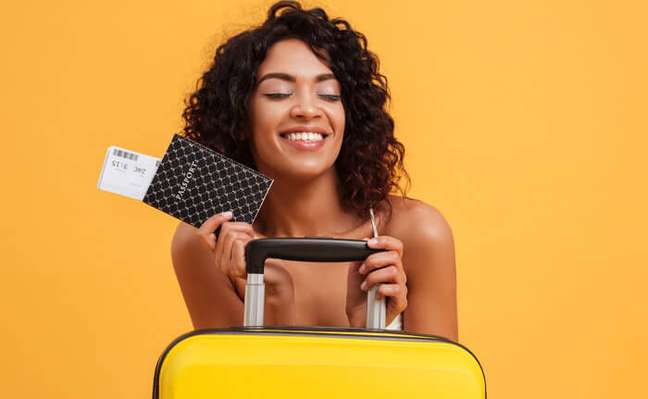Find out the best ways to make payments abroad

Brazilians are returning to travel, even to international destinations. But the devaluation of the real against other currencies remains worrying: both the dollar and the euro are at a level higher than R$ 5.
So, if you’re planning to travel abroad, check out expert money-saving tips.
How to save to use dollars or euros on travel
The first piece of advice is to avoid using a credit card: “Saving with unnecessary commissions and expenses to convert one’s reais into foreign currency is important in planning. First, use a foreign-issued debit card to pay for a lower IOF exchange rate. The IOF for the debit card is 1.1%, instead of the 6.38% paid with cards issued in Brazil). The economy here reaches over 5.2%, without any effort,” said Fintech Nomad Investment Director Celso Pereira.
The finance company provides a dollar debit card account. In addition to the IOF fee of 1.1%, the service fee of up to 2% must also be considered here, both for foreign currency and real currency conversions.
Most people travel to the United States, but other major destinations are European countries such as Portugal, France, Spain and Italy, as well as Canada, which also tops the list. Nomad advises that the average traveler spending using their card is between US$2,000 and US$2,200 during their trip.
Think IOF savings
IOF savings can also be obtained by purchasing the currency in Brazil to undertake the trip, explains Banco Daycoval’s director of foreign exchange, Eduardo Campos.
“The most important thing is to know which payment method is best accepted in the destination, as some countries tend to prefer the type of payment and some more developed countries only accept card payments in some places. In general terms, we have a saving in buying currency with cash due to the IOF difference of 6.38% on prepaid and credit cards and with cash it is only 1.10% ”, he says.
The downside to buying currency with cash is that this form is less secure, Campos points out: “It’s also worth mentioning that it’s the least secure method, which is why we always recommend splitting close to 40%/60% cash and the remaining card,” he said.
Another point to consider, according to Celso Pereira, from Nomad, is the type of exchange offered.
“Opt for companies that work with the market exchange rate (commercial dollar or euro), instead of most companies in the market that still practice a higher tourist exchange rate,” he explains.
It’s important to plan ahead
Another tip for not having to pay a very high estimate is to plan to make the exchange gradually.
“Finally, take advantage of the moments when the Brazilian real is rising to convert more reais into foreign currency and gradually convert reais into foreign currency,” said Celso Pereira.
For this, the traveler should keep an eye on the exchange rate and even get alerts on the matter. Some companies also offer the possibility of sending notifications that warn users of the appreciation of the real.
🇧🇷The best content in your email for free. Choose your favorite Terra newsletter. Click here!
Source: Terra
Ben Stock is a lifestyle journalist and author at Gossipify. He writes about topics such as health, wellness, travel, food and home decor. He provides practical advice and inspiration to improve well-being, keeps readers up to date with latest lifestyle news and trends, known for his engaging writing style, in-depth analysis and unique perspectives.






![Such a wonderful sun in advance: Summary of the episode on August 28, 2025 [SPOILERS] Such a wonderful sun in advance: Summary of the episode on August 28, 2025 [SPOILERS]](https://fr.web.img2.acsta.net/img/9b/10/9b10f4f0224ab0aea303ed7fbf38edd1.jpg)
